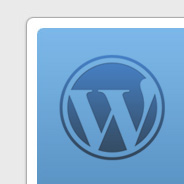Impressive Webs Redesign

The layout of the site remains virtually the same, so, like I said, it’s not as much of a redesign as a “skinning”. I did change the height of the top navigation bar, and added some new graphics.


The layout of the site remains virtually the same, so, like I said, it’s not as much of a redesign as a “skinning”. I did change the height of the top navigation bar, and added some new graphics.

@font-face, etc), then you also may have heard of a font format called EOT. Well, if Microsoft has it their way, EOT will become the standard, allowing web developers — with permission from font vendors — to be free to use virtually any font in a text-friendly manner in their web pages.
So what is EOT, and how has Microsoft pushed to standardize this method? Embedded OpenType fonts are compact OpenType fonts designed by Microsoft for use as embedded web fonts. They are recognizable by their “.eot” file extension. By means of data compression and removal of superfluous data, EOT files are made small in size and include features that protect the fonts themselves from being copied and used in unauthorized ways.

So, in this article I’ll run through 10 fairly straightforward ways that a beginning developer or blogger can customize their WordPress theme to ensure it doesn’t “look like a blog” — at least to a certain degree. Keep in mind that the goal here is not to hide the fact that a website is using WordPress — that’s quite difficult, if not impossible. The ultimate goal here is to help your website have a seamless, consistent, look and feel that does not necessarily scream “WordPress-driven” from the instant the home page loads up.
Tuesday morning, Adobe followed through on a webcast that was alerted via email subscribers informing previous Adobe software customers of the newest release of Adobe Creative Suite, specifically CS4. The graphic designers and front end developers at the company I currently work for got together to watch the web cast. Here is my summary: It […]
In a previous article I described (in principle) a method using JavaScript to get equal columns in a two-column layout. Of course, that’s not always the most elegant solution. Another solution, which is much easier to implement is completely CSS based. I’ll describe briefly how this is done and what possible effects it could have on your site’s layout and code. Here is the demo page, if you want to jump ahead.
I’m currently working on a project that requires that I use either some very tricky CSS or else JavaScript to make a left column div expand automatically to fit its parent container. The parent container and left hand nav appear on multiple pages, and there is different content, including that which is dynamically generated, so I cannot just add a height to both elements in the CSS.